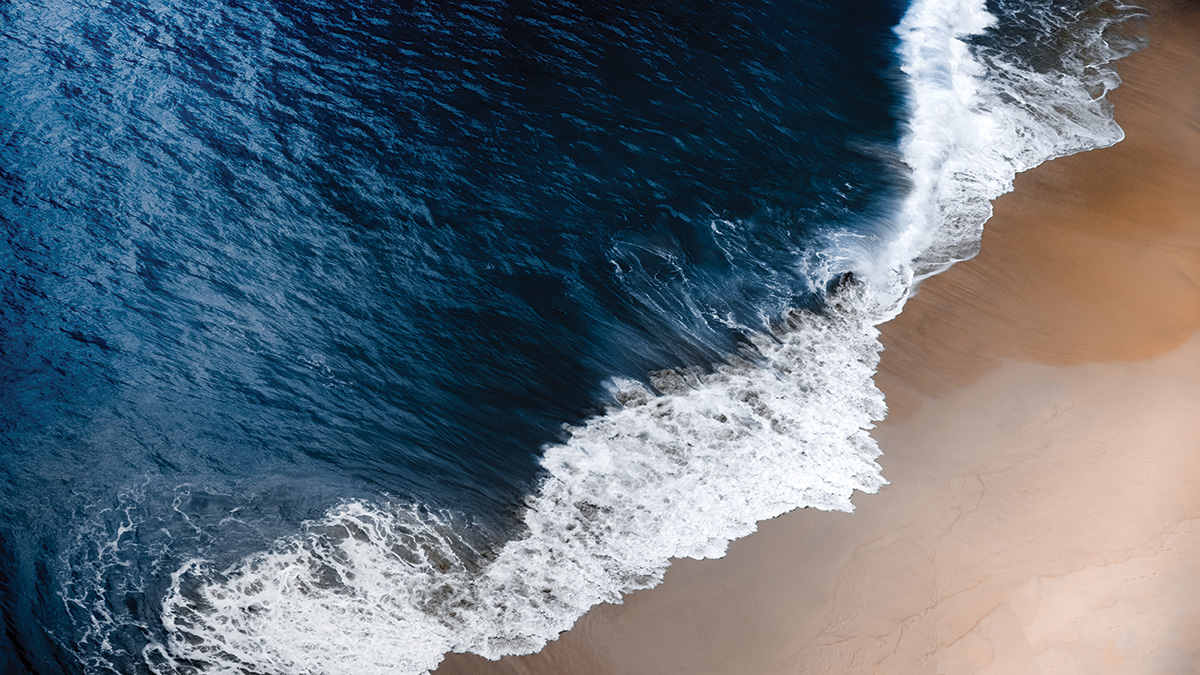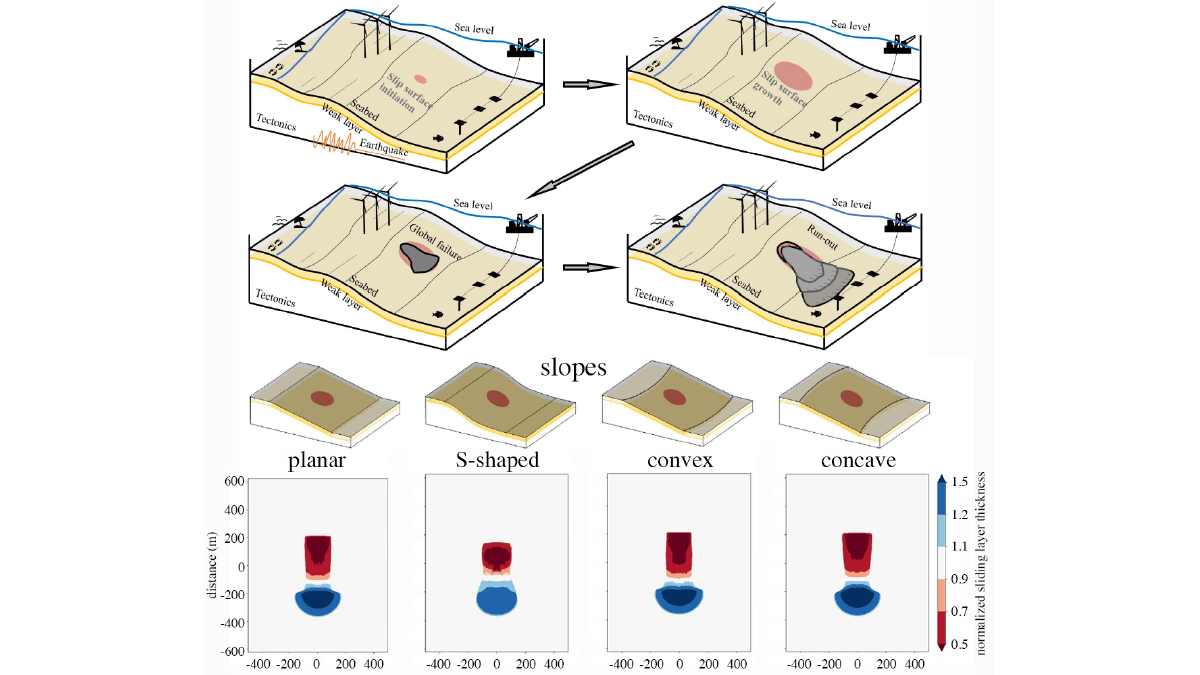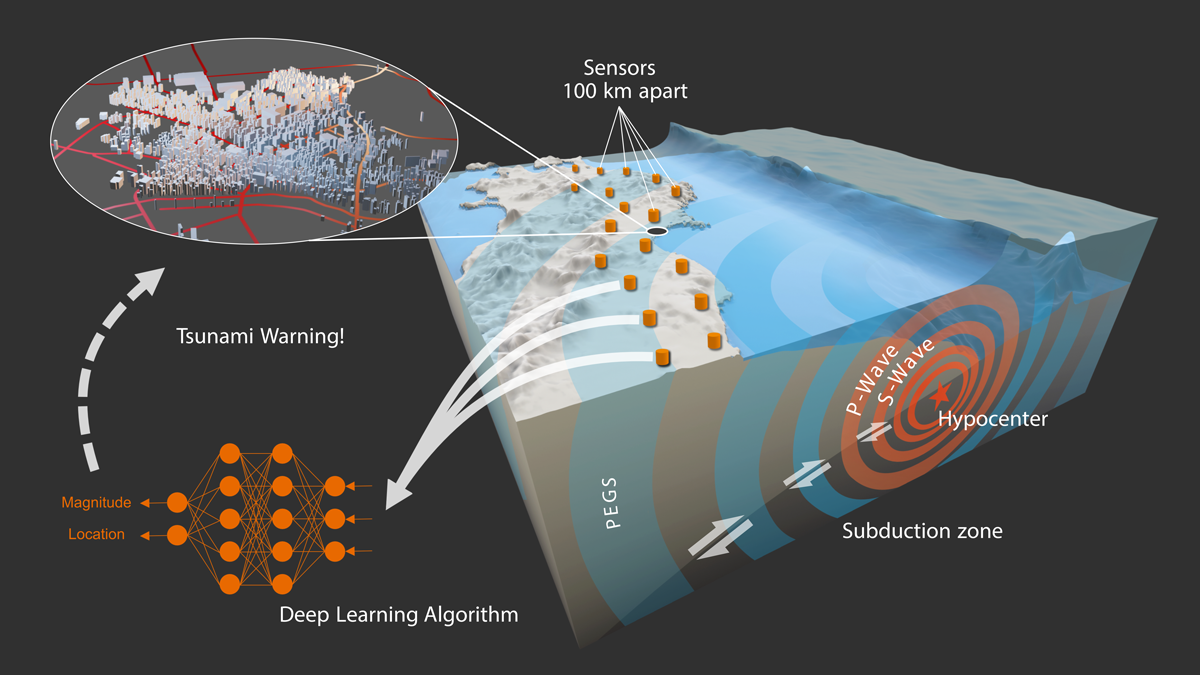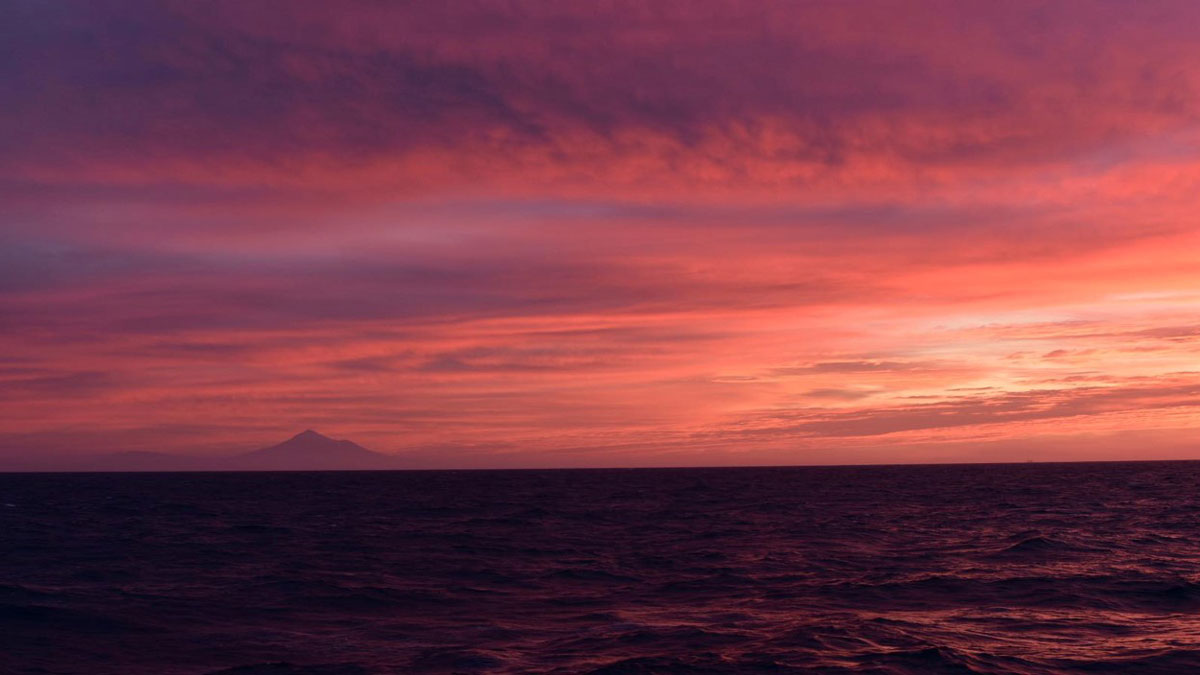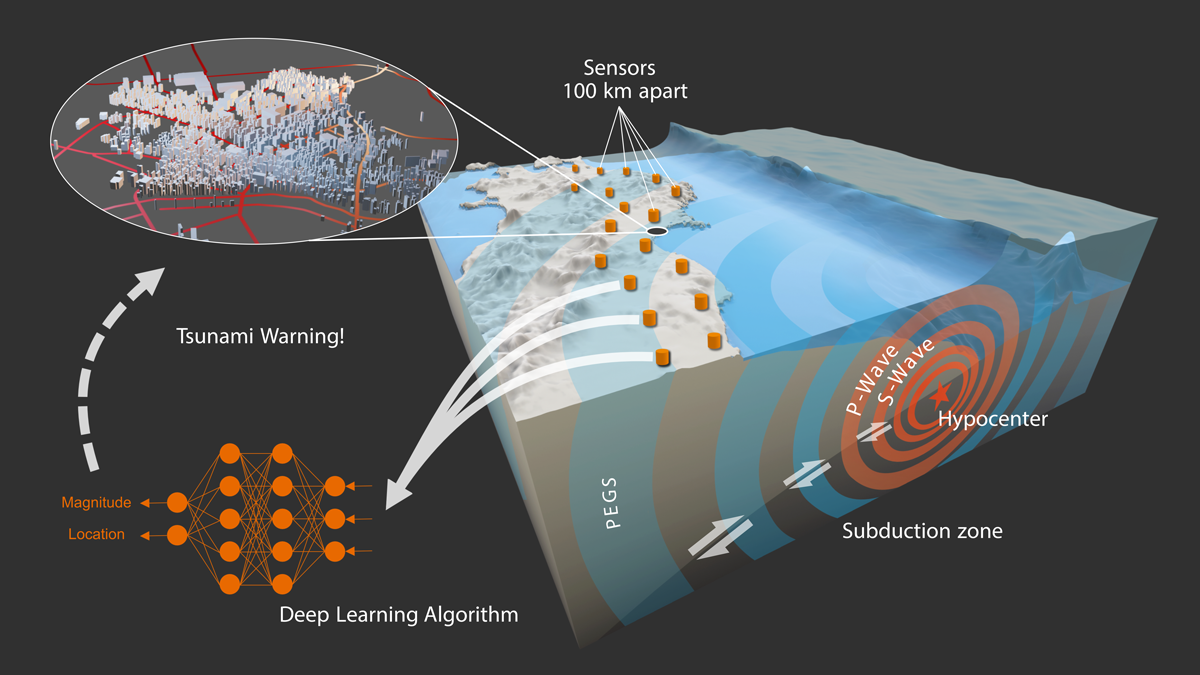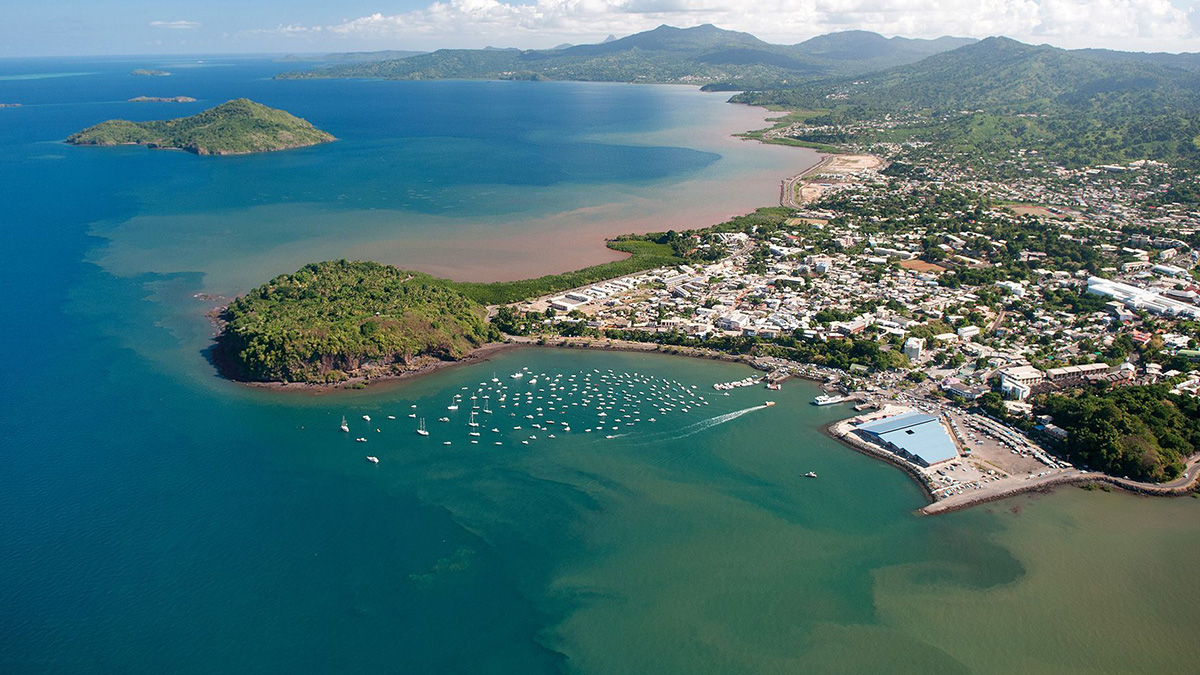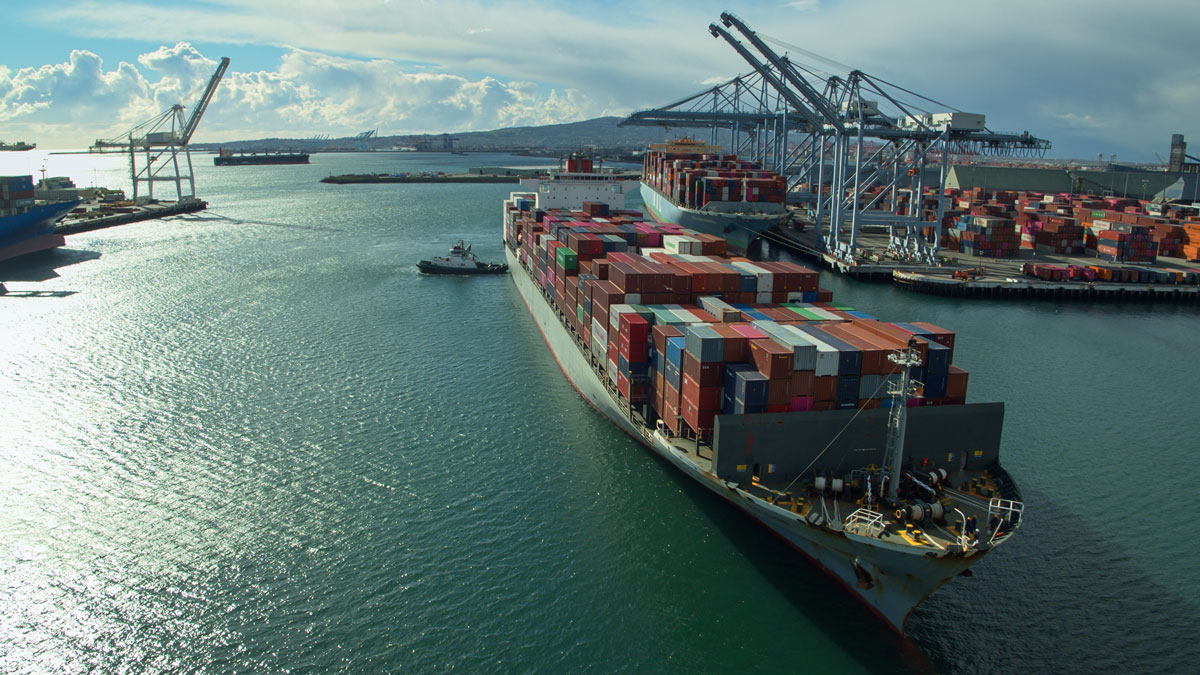Research over the past decade in Alaska’s Aleutian Islands has offered surprising insights into the pulses of great earthquakes that generate dangerous, often long-distance tsunamis.
tsunamis & storm surges
Making Waves
Sources of tsunamis are undersea, underground, and under the microscope in our October issue.
Growth That Economists Would Envy
A new study reveals how small cracks turn into gigantic submarine slides.
Monitoreando terremotos a la velocidad de la luz
Nueva investigación utiliza la gravedad y un modelo de aprendizaje automático para estimar instantáneamente la magnitud y ubicación de grandes terremotos.
“Landslide Graveyard” Holds Clues to Long-Term Tsunami Trends
A new project looks to unearth information about and learn from ancient underwater landslides buried deep beneath the seafloor to support New Zealand’s resilience to natural hazards.
Monitoring Earthquakes at the Speed of Light
New research uses gravity and a machine learning model to instantaneously estimate the magnitude and location of large earthquakes.
A Cagey Approach to Speedy and Safe Seafloor Deployments
Researchers devised a simple way to deliver ocean bottom seismometers accurately to the seafloor to study ongoing seismic and volcanic activity near the islands of Mayotte.
Which Came First, the Eruption or the Landslide?
Anak Krakatau’s eruption was accompanied by a devastating tsunami. But was the eruption to blame?
Rising Seas Boost Tsunami Impacts on Distant Shorelines
Modeling suggests that rising sea levels will render Southern California ports increasingly vulnerable to waves from distant-source tsunamis.
Atmospheric Rivers Spur High-Tide Floods on U.S. West Coast
Researchers analyzed 36 years of data to understand how atmospheric rivers and other factors drive chronic coastal flooding.


